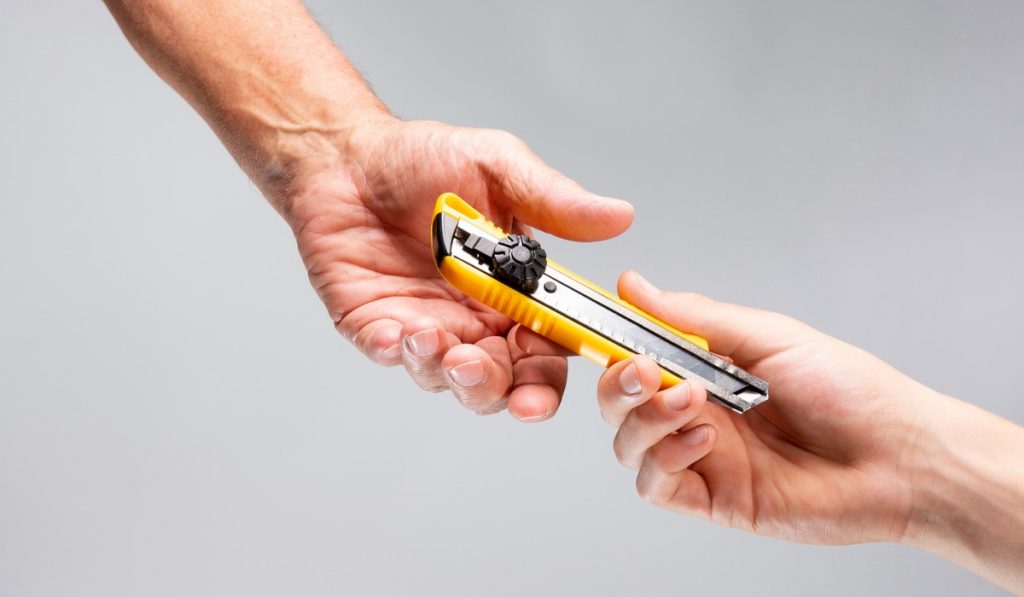What Can You Use a Utility Knife For?

A utility knife is one of the most versatile tools in any DIY toolkit. It’s a must-have for anyone serious about accomplishing projects, whether at home or on a job site. But what exactly can you use a utility knife for? In this post, we’ll discuss the different types of utility knives and the tasks they’re best for. We’ll provide detailed instructions for how to use a utility knife properly, so you can keep yourself safe and get the job done correctly.
What Is a Utility Knife?
A utility knife is a handheld tool used for cutting lighter materials such as paper or cardboard. It has a sharp blade with one or two interchangeable blades that fit into a handle. Some utility knives have an exchangeable blade system, while others feature a snap-off blade that can be quickly removed and replaced when it becomes dull.
Types of Utility Knives
There are several types of utility knives available on the market. The most common type is the folding knife, which is lightweight and easy to carry. Retractable utility knives are also popular and feature blades that can be extended and retracted for smoother cutting and more precise lines. There are also fixed-blade knives that feature one or two blades that must be manually replaced when they become dull.
Benefits of Using a Utility Knife
Easy to Use
Utility knives are incredibly easy to use due to their lightweight design and simple operation. The blades on most utility knives are designed to be exchanged quickly, so you don’t have to expend time and energy sharpening them or replacing them with new ones. They are also much safer than traditional pocket knives due to their smaller size, making them perfect for completing light to medium-duty jobs without the worry of accidentally injuring yourself or someone else in the process.
Versatility
The greatest benefit of using a utility knife is its versatility. They are suitable for both light and heavy-duty projects, from cutting drywall or carpet to crafting and art projects. With its interchangeable blades, it can be used in many different settings with little setup time required. The blades on some types of utility knives are designed for specific tasks, making them ideal for specialized projects requiring precision cutting.
Common Uses for a Utility Knife
A utility knife is a versatile cutting tool that can come in handy for a variety of tasks. It is designed for light-duty activities such as cutting cardboard to medium-duty activities such as cutting drywall, carpet, and other materials. To ensure you can complete your project safely and accurately, it’s important to understand what a utility knife is and what materials it is used for. Here are some common uses for a utility knife.
Cutting Drywall
One common use of utility knives is cutting drywall or other sheet materials such as plywood or chipboard. Their sharp blades make it easy to cut these materials cleanly without leaving any rough edges or gouging the material in the process. With the right technique, you can easily cut drywall into any shape you need without damaging the surface underneath it.
Cutting Carpet
Another great use for utility knives is cutting carpets or other fabrics. The sharp blades make it easy to slice through fabrics quickly and cleanly without needing to use scissors or other heavy-duty equipment. This makes it perfect for smaller projects like patching holes in carpets or upholstery where accuracy and precise lines are critical.
Cutting Foam
Utility knives are also perfect for working with foam materials like insulation or furniture padding due to their shorter blades that provide more control when cutting foam materials. In addition, the thin blade makes it easy to create clean cuts where precision is essential, making it ideal for crafting projects like foam sculptures or detailed toy pieces that require precise shapes and sizes made from a foam material.
Cutting Vinyl
In addition to carpets and foam materials, many people find themselves using their utility knives when working with vinyl materials. The compact size of the blade, combined with its sharp edges, makes it easy to slice through vinyl without causing any tears or rips in the material, even when attempting complex patterns such as zigzag lines.
Cutting Plastic
When working with plastic parts such as pipes or boards, having access to a reliable utility knife can make all the difference in ensuring precise cuts each time. Unlike larger saws that could leave rough edges on plastic materials, a good quality utility knife will allow you to make clean cuts quickly, something that could potentially save you time and money.
Conclusion
A utility knife is a must-have tool for any DIY project. It is lightweight, easy to use, and its versatile design makes it great for a variety of tasks. There are several types of utility knives available, and each is useful for different applications. Knowing what tasks a utility knife is best for and how to use it correctly is essential for getting the most out of this versatile tool. With the right utility knife and a few safety tips, you’ll be prepared to tackle any project that comes your way.
